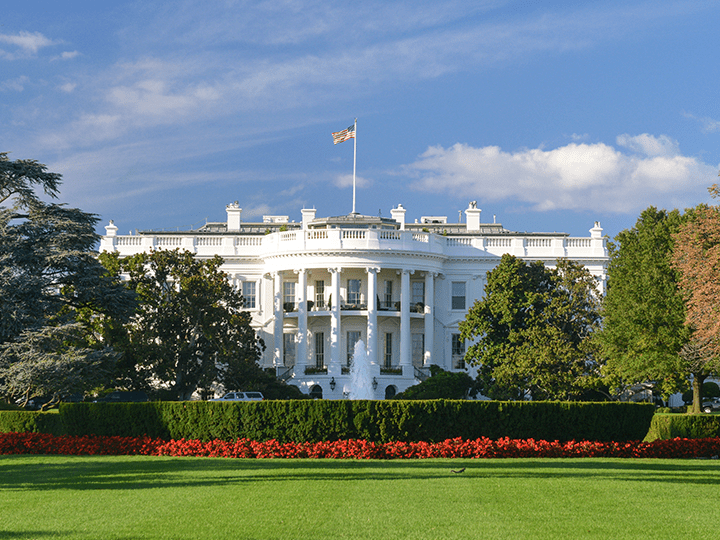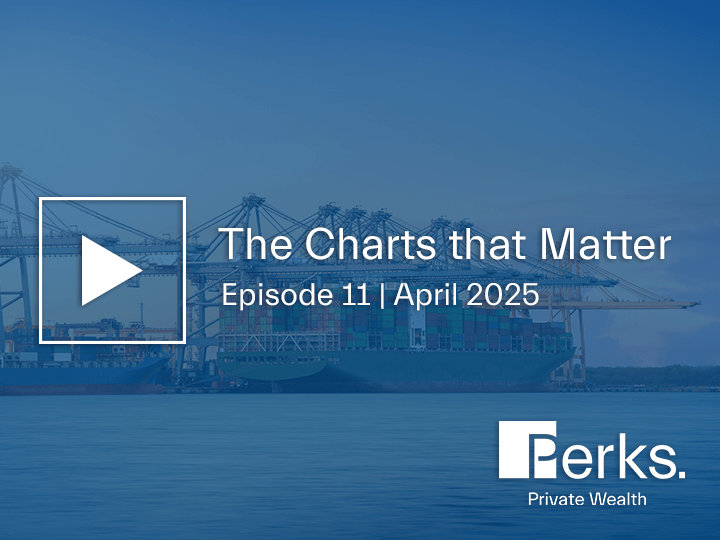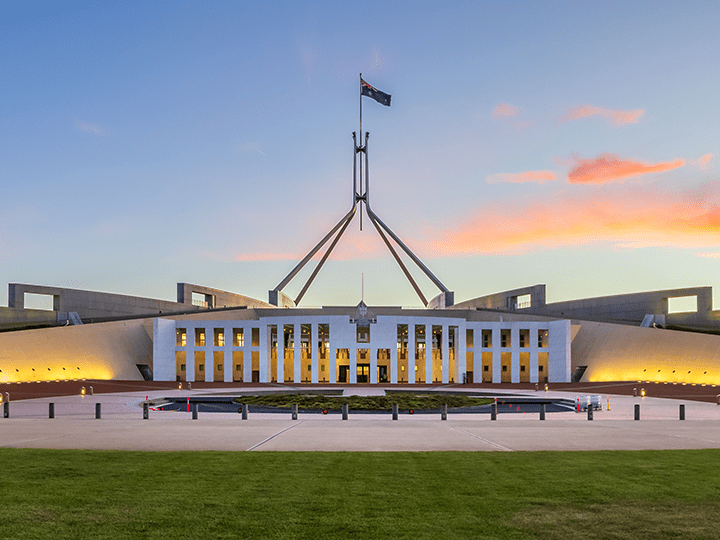Globalisation in Reverse: How Trade Wars Are Redefining Market Risk
Posted on 7/4/2025
Overview:
Markets plunged last week as Trump’s “Liberation Day” tariffs triggered a global selloff and retaliation from various global trade partners, including China. With major indices sliding and trade tensions rising, volatility is back in focus. Fortunately, Perks Private Wealth is positioned for expected volatility. Read on for our take on what’s driving the current turmoil and what it could mean for markets ahead.
At the centre of the selloff is President Donald Trump’s “Liberation Day” tariff initiative – a sweeping trade action imposing a baseline 10% tariff on all imports, with significantly higher rates for selected countries. China, for example, was hit with a 34% tariff.
The administration described the policy as a move towards “reciprocal tariffs” – a framework under which the US imposes trade barriers mirroring those levied by other nations, with the stated goal of rebalancing trade relationships. China responded immediately, introducing its own 34% tariff on all US goods and restricting the export of key rare earth minerals – a critical input in global manufacturing.
Investors are now reassessing the global trade framework, speculating whether the US is attempting to unwind decades of post-war globalisation or simply seeking a fairer system for itself. Until China’s retaliation, the correction had been relatively orderly. With trade tensions now escalating, further volatility appears likely, particularly as hedge funds and other leveraged strategies face margin calls and begin de-risking.
Sentiment Breaks. No Policy Backstop
Investor sentiment has weakened considerably. Bearishness among US investors, tracked by AAII, is at its highest since the 2020 recession. Despite the correction, the S&P 500 still trades at 19.5x forward earnings – above the 10-year average of 18.6x. Valuations have come off earlier-year highs but remain stretched relative to historical averages, leaving scope for further downside if the economic outlook deteriorates.
Markets need a clear catalyst to stabilise – whether deeper tax cuts, tariff negotiations, or a broader policy shift – none of which appear imminent. There has been no indication of a Fed or Trump put despite intensifying market stress. With no immediate circuit-breaker, volatility is likely to remain elevated over the next 3-6 months. The current drawdown may still be unfolding.
Timing market bottoms is inherently difficult, even more so when re-entering after a drawdown. As such, we would advise our clients to maintain sufficient cash levels to cover spending needs over the next six months and consider if it appropriate to stagger any new equity allocations through the remainder of the year. We do not recommend a wholesale reduction in risk or selling into a correction that has commenced.
Downgrades To Economic Growth
Late last week, JPMorgan cut its 2025 US GDP forecast from +1.3% to -0.3%, citing tariff pressure and rising policy uncertainty. Unemployment is now expected to reach 5.3% (up from 4.2%). The escalation in trade wars has revived stagflation concerns – weak growth alongside persistent inflation. JPMorgan now assigns a 60% probability to a global recession, up from 40%. This shift has weighed heavily on markets.
High-yield spreads widened by 100 basis points to 4.45% (ICE BofA) – the largest move since 2020. Investors are demanding greater compensation for default risk, particularly in companies with tight margins and near-term refinancing needs. Slower growth and rising funding costs are compounding pressure on weaker issuers. Spreads had been far too tight and were not adequately compensating investors for the risk associated with the asset class.
Hedge Funds Hit the AUD
The Australian dollar against the USD dropped 5% on Friday, one of the steepest declines globally. China’s economy appears increasingly vulnerable under stiff US tariffs, and hedge funds have been selling the AUD as a proxy for Chinese risk. With tariffs potentially exceeding 70% on certain Chinese imports, supply chains across Asia face disruption. Many Southeast Asian manufacturers rely on Chinese components, amplifying the fallout.
US Treasury Secretary Bessent has expressed a preference for a weaker US dollar, which contrasts with the recent move in the AUD and other global currencies. Australia’s trade dependency on China accounts for much of the currency’s underperformance. We view the AUD as undervalued at current levels and advise caution in adding further to any overweight unhedged exposure to the USD or other G7 currencies.
RBA: Imminent Rate Cuts
The RBA left rates unchanged in April at 4.1%, a decision widely considered hawkish. Although expected, the Bank stressed it remains “cautious about the outlook”. Markets currently price an 80% chance of a cut in May, with the cash rate projected to settle between 3.3% and 3.4% by year-end, implying three cuts in 2024.
Trimmed mean inflation, the RBA’s preferred metric, eased to 2.7% in February, squarely within the 2-3% target range. Domestic growth is slowing, and with last week’s significant escalation in trade wars, it suggests the RBA could act more aggressively than markets currently anticipate. Markets are slowly warming to the possibility of four rate cuts by the RBA this year.
Where to From Here?
Globalisation appears to be unravelling in real time. US tariffs are now at multi-decade highs, and China’s retaliation has further weakened sentiment. Markets are adjusting to this shift, but with no resolution in sight, volatility is likely to remain elevated.
While Trump is seeking to reindustrialise the US, tariffs in their current form are unequivocally damaging to global growth, particularly in the absence of clearer or more balanced trade terms with key partners.
Historically, such measures have been rolled back once the economic cost becomes unsustainable. For now, there is no indication of a retreat from Washington. Republicans are advancing a tax package that, if passed, could help offset near-term market pressure.
Trump has a history of reversing course, often using worst-case scenarios as a baseline for negotiations. The tariffs announced last week are likely an opening bid. Over the weekend, Vietnam (46% tariff), Tawain (32%), India (26%), and Israel (17%) all indicated they would seek exemptions or improved trade terms. If successful and repeated, this could meaningfully reduce the impact on the global economy. There is also the question of whether more countries will now seek trade deals with the US to avoid punitive tariffs.
Markets tend to reprice quickly once policy direction becomes clearer – though they often overshoot, swinging between complacency and panic. Some investors expect a shift if equity weakness deepens, especially given Trump’s past use of market performance as a political signal. To date, no such pivot has occurred.
Initial Portfolio Considerations
- With ongoing uncertainty and no indication of a policy pivot, market conditions are likely to remain volatile – at least over the next three months, and potentially through to year-end.
- Portfolios should retain sufficient cash to meet required spending needs over the next 6 months. Avoid reactive changes unless allocations have materially exceeded strategic targets.
- Current volatility is being driven by unorthodox policy. As such, there will be considerable noise and overreaction. Genuine diversification remains one of the few free lunches in markets.
- Indeed, significant money can be lost by panicking in times of financial stress, conversely, money is made and consolidated by calm behaviour through such times.
- We would emphasise the importance of staying invested and focusing on time in the market rather than attempting to time an entry point.
- This is not to suggest portfolios should remain static or adopt a 100-year view. Market dislocation and volatility will create opportunities, and portfolios should be positioned to take advantage of them.
- In Australia, there is a realistic prospect of 75-100bps of easing this year. Markets are applying similar expectations for the US Fed. This would be supportive for fixed income, private credit, equities, and real assets such as property. Again, this reinforces the importance of avoiding reactive decisions.
We will continue to update you on market developments, strategy positioning, and key shifts across asset classes. Please get in touch if you have any questions or would like to discuss in more detail.
Disclaimer: Any financial product advice is provided by Perks Private Wealth Pty Ltd (AFSL No. 236551) (“PPW”). The information provided is general in nature and is not personal financial product advice. The information provided has been prepared without taking into account your objectives, financial situation or needs and because of this you should, before acting on it, consider the appropriateness of it having regard to your objectives, financial situation and needs. You should carefully read and consider any product disclosure statement that is relevant to any financial product that has been discussed before making any decision about whether to acquire the financial product. Please refer to our Compliance & Legal page for PPW’s FSG for contact information and information about remuneration and associations with product issuers.






